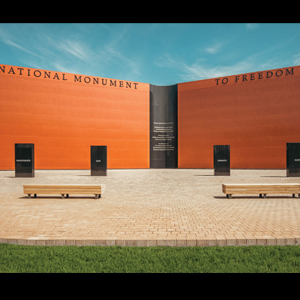Point of View: What We Should Not Forget

This year we mark the 60th anniversary of the Civil Rights Act. While it’s true that the Immigration and Nationality Act of 1965 opened the door to nonwhites, we should remember that it was the Civil Rights Act of 1964—which outlawed discrimination based on race, color, sex, and national origin—that made our immigration possible.
In the U.S., for more recent ethnic groups like Indian Americans, will 2025 be a good year to take stock of their community’s immigrant journey? It may depend on the upcoming election. Why 2025, though? It’s because next year will mark the 60th anniversary of a landmark legislation—the Immigration and Nationality Act of 1965—passed by Congress. Also known as the Hart-Cellar Act, it abolished national origin quotas, favored skilled immigrants, and gave preference to family reunification. To get a sense of its impact, here’s a comparison from the 2010 Yearbook of Immigration Statistics: While 1,850 immigrants came to the U.S. from India between 1950 and 1959, that number jumped to 590,464 between 2000 and 2009.
For nonwhite immigrants, one could argue, an even more consequential law became effective six decades ago. This was the Civil Rights Act of 1964, which outlawed discrimination based on race, color, sex, and national origin. But I paid scant attention to it for a long time. As a beneficiary of the family reunification category, I mistakenly viewed the Immigration and Nationality Act as the sole reason for my presence in this country.
A decade ago, on my first visit to Ellis Island in New York Harbor, I was, like countless other visitors, captivated by the Museum of Immigration. And the Statue of Liberty, when I got close to it, ceased to be a cliché. But just two years later, as the 2016 election campaign got underway, and quickly turned ugly, xenophobia, not to mention racial prejudice, became fashionable again and I seemed to be living in different country. Lady Liberty now appeared battered and bruised.
The polarization that one saw then has only deepened, and as another nasty election campaign takes off in 2024, the battle lines are clearly drawn and each side feels that the choice is between victory and annihilation.
The resurgence of ethnoreligious nationalism and isolationism is threatening our multiracial, pluralistic democracy like never before in our lifetime.
The truth, as I belatedly realized, is that the Immigration and Nationality Act wouldn’t have been possible without the Civil Rights legislation—and in the 1960s, it was the latter bill that loomed large, drawing intense opposition even after it was passed. A four-part CNN documentary (LBJ: Triumph and Tragedy) that aired in 2022 revealed how the 1964 Civil Rights legislation drew more hate mail than the highly contentious Vietnam War.
The 1965 immigration legislation, in contrast, seemed to have slipped under the radar. Nobody thought it would lead to big changes, including President Lyndon B. Johnson—who signed the bill near the Statue of Liberty—and Ted Kennedy, the liberal lion, who famously said, “It will not upset the ethnic mix of our society.”
Conservative signatories, initially opposed to the bill, were won over after their push for the family reunification category was accepted. They thought it would help to preserve, even enlarge, the European composition of American society. It became the Law of Unintended Consequences. For various reasons, including rising prosperity in Western Europe and growing repression in Eastern Europe, migration to the U.S. from Europe dropped. Meanwhile, migration from the more populous Asian nations increased, dramatically in some cases. Indian immigration to the U.S., for instance, grew from 18,638 in the 1960s to 147,997 in the 1970s, according to the 2010 Yearbook.
Asian Americans, the Pew Research Center notes, have been the fastest-growing group of eligible voters over the past two decades, and since 2020, their number has risen by two million eligible voters (15%).
 To understand these demographic shifts, it’s worth going back 100 years. The Immigration Act of 1924 was implemented to preserve the nation’s existing demographic makeup. Its strict national origin quota, which favored Europeans, kept nonwhites out for all practical purposes. This “ban” lasted four decades. To gauge its effect, here’s another comparison from the 2010 Yearbook: Individual exceptions and pre-2024 migration allowed 2,076 Indians to immigrate in the 1920s, but that number dropped to 554 in the 1930s.
To understand these demographic shifts, it’s worth going back 100 years. The Immigration Act of 1924 was implemented to preserve the nation’s existing demographic makeup. Its strict national origin quota, which favored Europeans, kept nonwhites out for all practical purposes. This “ban” lasted four decades. To gauge its effect, here’s another comparison from the 2010 Yearbook: Individual exceptions and pre-2024 migration allowed 2,076 Indians to immigrate in the 1920s, but that number dropped to 554 in the 1930s.
[Right] Photo: Equal Justice Initiative
Admittedly, one factor fueling today’s backlash to demographic change—rising border crossings by undocumented migrants—is not addressed here. While it’s true they can’t vote in U.S. elections, this migration is a big issue, an issue that only Congress can tackle in a bipartisan manner. Unfortunately, it has become a political football that cynical lawmakers kick down the road.
For decades, despite repeated attempts, the restrictive 1924 immigration legislation couldn’t be repealed. It was the Civil Rights Act of 1964 that really ended it because, as noted earlier, without that there would have been no immigration legislation in 1965.
Ellis Island operated from 1892 to 1954, a period during which none of my forebears in India would have been allowed to enter the U.S., perhaps even as visitors. Still, curiously, it was Ellis Island (and the grand drama of immigration it represented) that fascinated me for years.
The Deep South, where I live and where there had been no Ellis Island-style port of entry, seemed unconnected to my immigrant journey to America. How wrong I was! Although my U.S. entry point, New York, has been an entry point for generations of immigrants, what had made my arrival possible were the hard-won Civil Rights battles in the Deep South, fought mostly by terrorized Black Americans leading segregated lives as second-class citizens.
The monuments I should pay attention to are scattered throughout this region, starting with the Martin Luther King Jr. site in Atlanta. There are also newer museums and memorials such as the Legacy Sites in Montgomery, Alabama, where visitors will see the soaring National Monument to Freedom. With more than 100,000 names engraved on it, this monument, like the sculpture park it’s located in, honors the lives of the 10 million people who were enslaved in America.
Indian Americans and other immigrants of color cannot forget this legacy. Yes, they should acknowledge the importance of the Immigration and Nationality Act of 1965. But they should also remember that their passage to America was made possible by the Civil Rights Act of 1964.
Murali Kamma is the managing editor of Khabar magazine. A slightly different version of this column appeared in The Quint, a news and opinion media outlet based in New Delhi, India. Email: letters@khabar.com
Enjoyed reading Khabar magazine? Subscribe to Khabar and get a full digital copy of this Indian-American community magazine.
blog comments powered by Disqus










